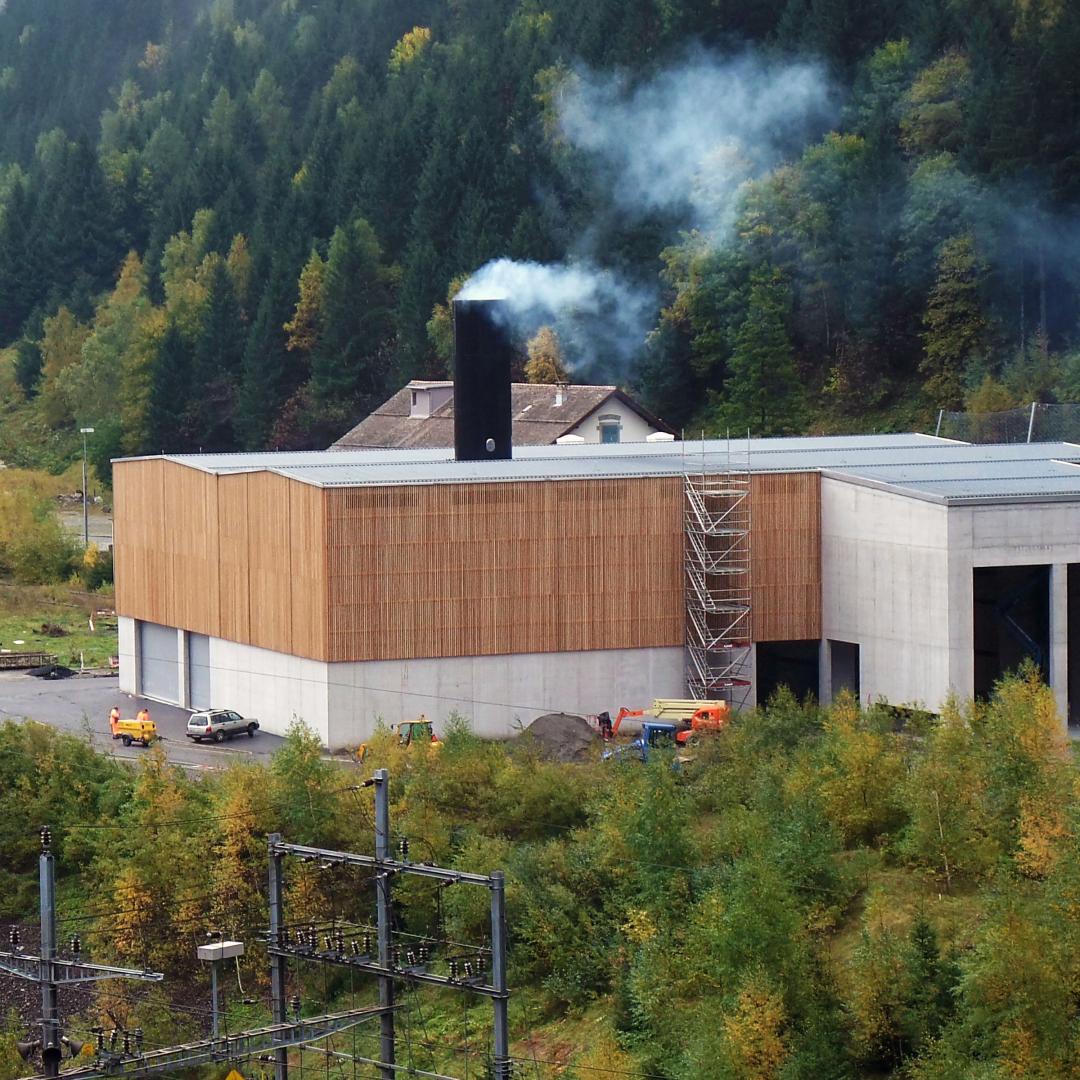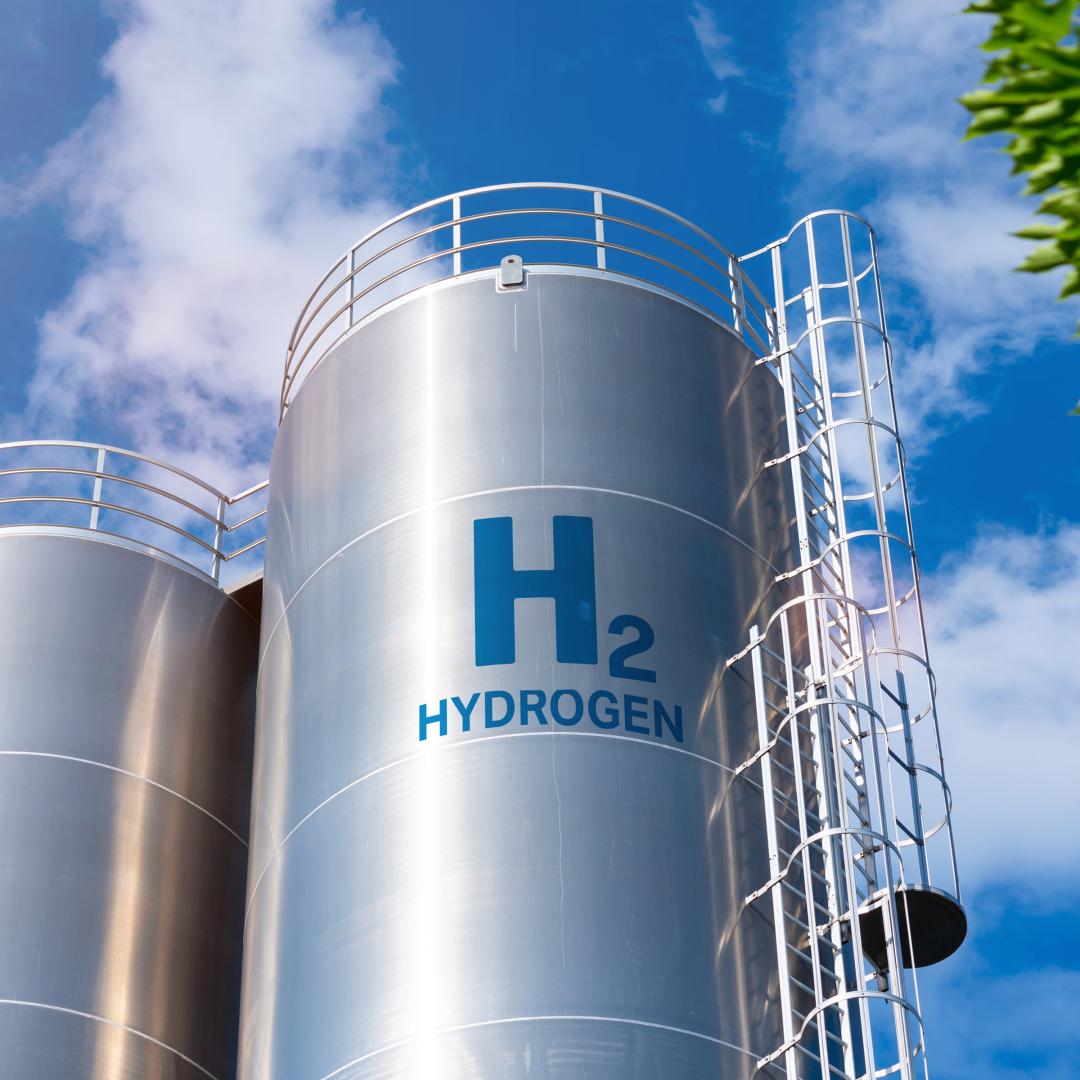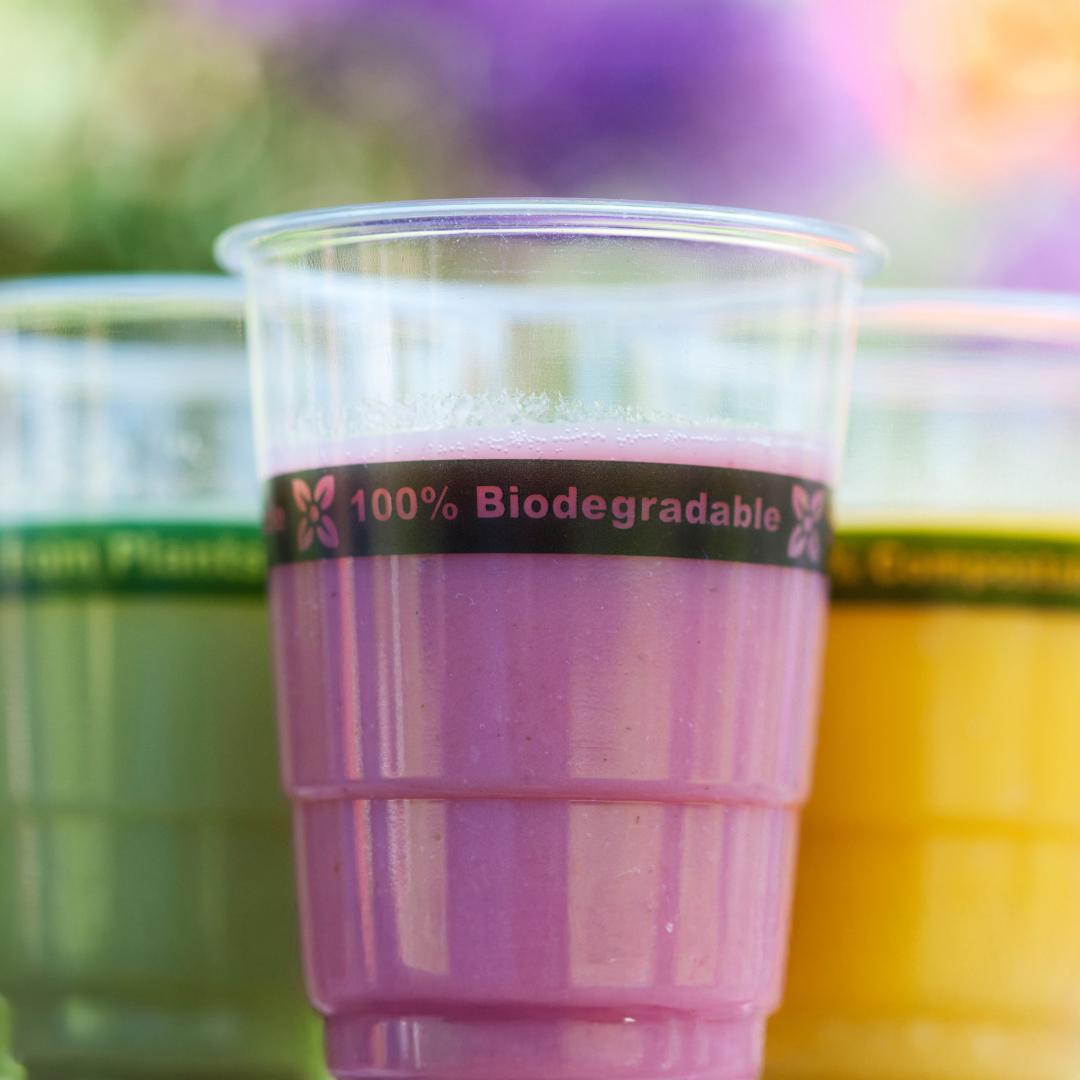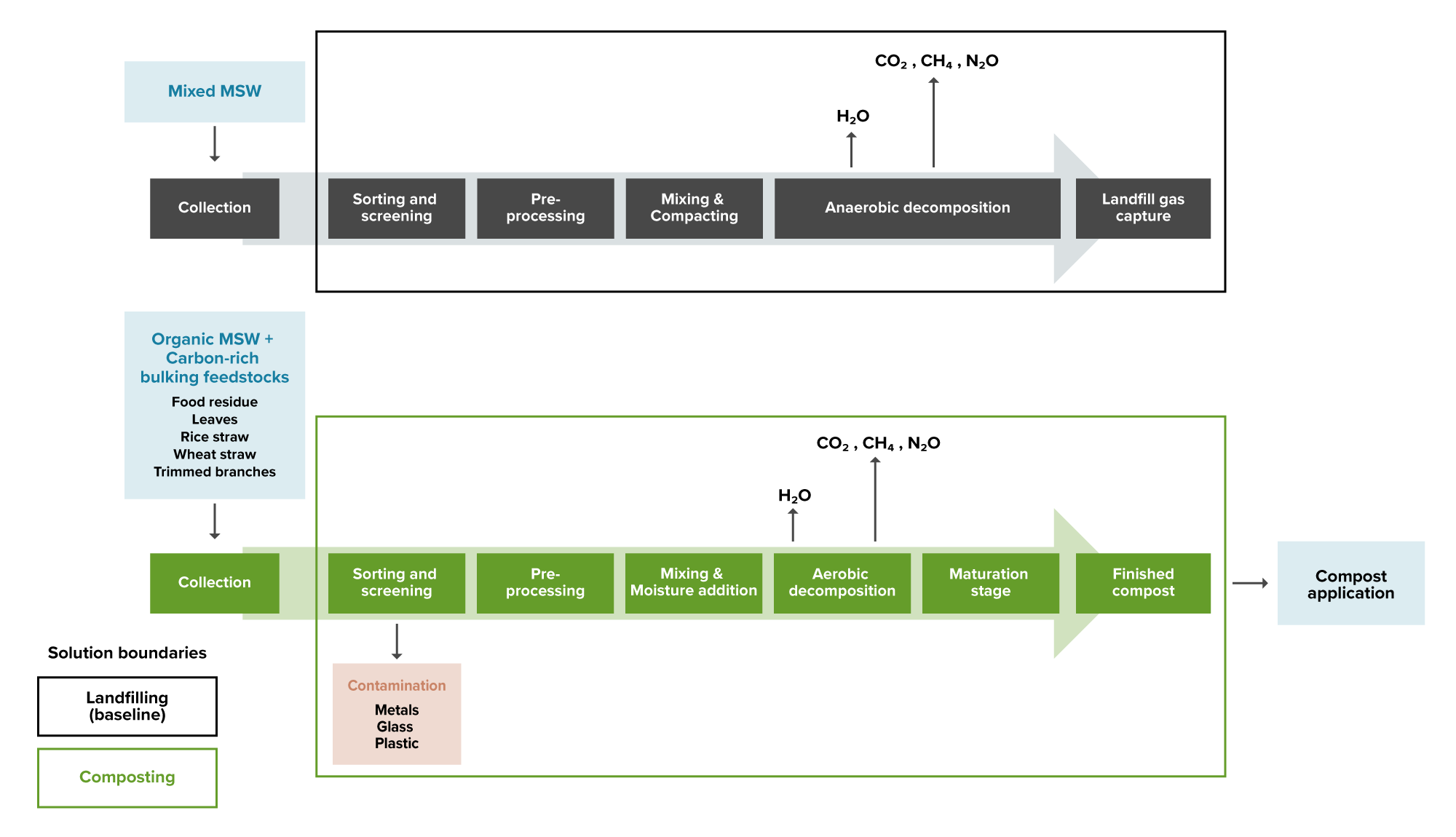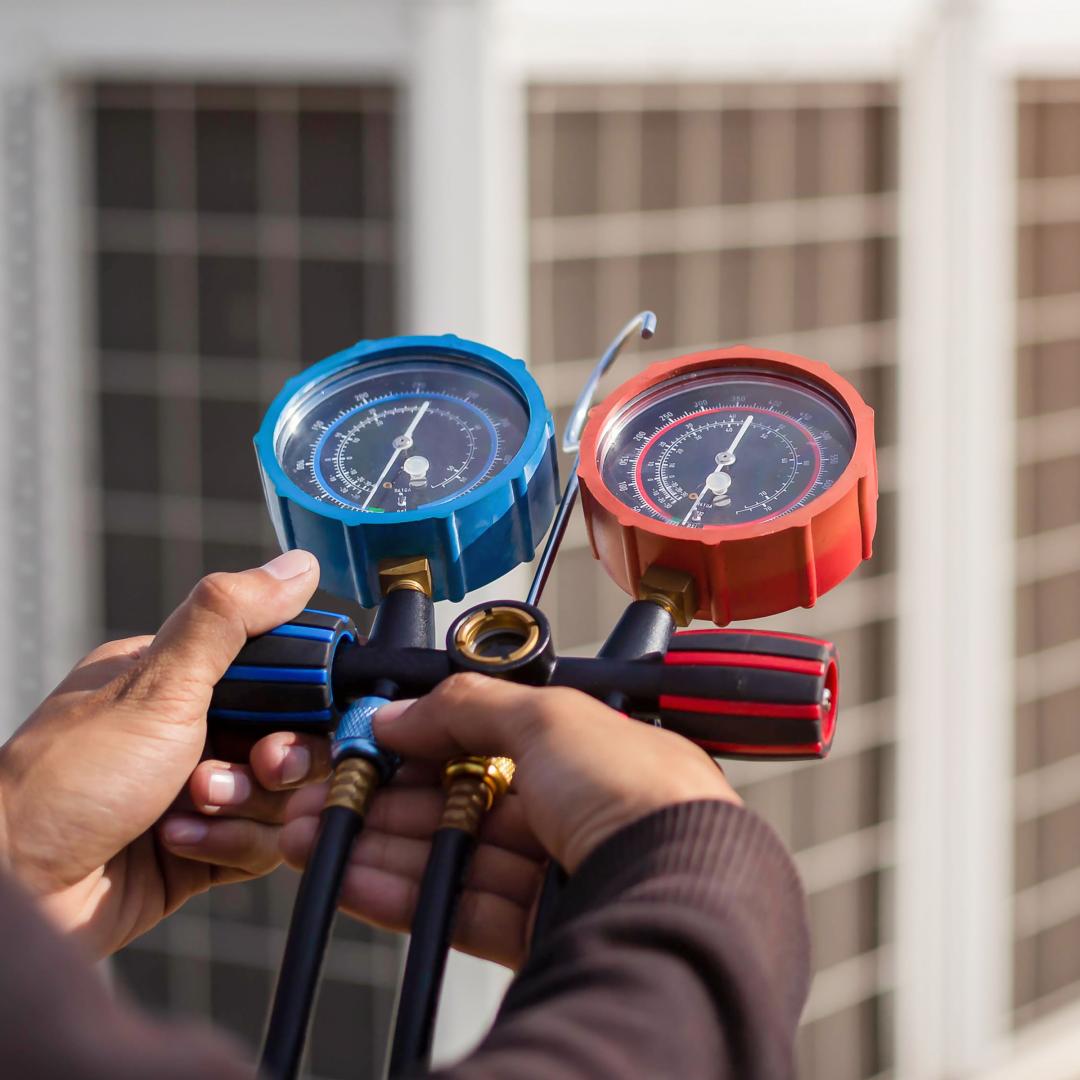Allwood, J. M., Music, O., Loukaides, E. G., & Bambach, M. (2025). Cut the scrap: Making more use of less metal. CIRP Annals, 74(2), 895–919. Link to source: https://doi.org/10.1016/j.cirp.2025.04.013
Aparcana, S., & Salhofer, S. (2013). Development of a social impact assessment methodology for recycling systems in low-income countries. The International Journal of Life Cycle Assessment, 18(5), 1106–1115. Link to source: https://doi.org/10.1007/s11367-013-0546-8
Awino, F. B., & Apitz, S. E. (2024). Solid waste management in the context of the waste hierarchy and circular economy frameworks: An international critical review. Integrated Environmental Assessment and Management, 20(1), 9–35. Link to source: https://doi.org/10.1002/ieam.4774
Ayodele, T. R., Alao, M. A., & Ogunjuyigbe, A. S. O. (2018). Recyclable resources from municipal solid waste: Assessment of its energy, economic and environmental benefits in Nigeria. Resources, Conservation and Recycling, 134, 165–173. Link to source: https://doi.org/10.1016/j.resconrec.2018.03.017
Azadi, M., Northey, S. A., Ali, S. H., & Edraki, M. (2020). Transparency on greenhouse gas emissions from mining to enable climate change mitigation. Nature Geoscience, 13(2), 100–104. Link to source: https://doi.org/10.1038/s41561-020-0531-3
Baek, C. R., Kim, H. D., & Jang, Y.-C. (2025). Exploring glass recycling: Trends, technologies, and future trajectories. Environmental Engineering Research, 30(3), Article 240241. Link to source: https://doi.org/10.4491/eer.2024.241
Bajpai, P. (2014). Introduction. In Recycling and deinking of recovered paper (pp. 1–18). Elsevier. Link to source: https://doi.org/10.1016/B978-0-12-416998-2.00001-5
Barford, A., & Beales, A. (2025, April 3). Decent work opportunities and challenges in recycling [ILO Technical brief]. International Labour Organization. Link to source: https://www.ilo.org/publications/decent-work-opportunities-and-challenges-recycling
Bauer, F., Nielsen, T. D., Nilsson, L. J., Palm, E., Ericsson, K., Fråne, A., & Cullen, J. (2022). Plastics and climate change—Breaking carbon lock-ins through three mitigation pathways. One Earth, 5(4), 361–376. Link to source: https://doi.org/10.1016/j.oneear.2022.03.007
Berardocco, C., Delawter, H., Putzu, T., Wolfe, L. C., & Zhang, H. (2022). Life cycle sustainability assessment of single stream and multi-stream waste recycling systems. Sustainability, 14(24), Article 16747. Link to source: https://doi.org/10.3390/su142416747
BioCubes. (n.d.). BioCubes: An inventory of biomass and technomass [Interactive infographic]. Retrieved August 8, 2025, from Link to source: https://biocubes.net/
Bogner, J., Abdelrafie Ahmed, M., Díaz, C., Faaij, A., Gao, Q., Hashimoto, S., Marecková, K., Pipatti, R., & Zhang, T. (2007). Waste management. In B. Metz, O. R. Davidson, P. R. Bosch, R. Dave, & L. A. Meyer (Eds.), Climate change 2007: Mitigation. Working group III contribution to the fourth assessment report of the intergovernmental panel on climate change (pp. 585–618). Cambridge University Press. Link to source: https://www.ipcc.ch/site/assets/uploads/2018/02/ar4-wg3-chapter10-1.pdf
Burinskienė, A., Lingaitienė, O., & Byčenkaitė, G. (2025). Dynamics of trade of recycled raw materials and the connection with the circular economy. Discover Sustainability, 6, Article 680. Link to source: https://doi.org/10.1007/s43621-025-01502-4
Cabernard, L., Pfister, S., Oberschelp, C., & Hellweg, S. (2022). Growing environmental footprint of plastics driven by coal combustion. Nature Sustainability, 5(2), 139–148. Link to source: https://doi.org/10.1038/s41893-021-00807-2
Campbell, R., Bond, D. E., Connellan, C., Mohen, P., & Foo, J. (2022, May 5). From trash to treasure: Green metals from recycling [Insight]. White & Case. Link to source: https://www.whitecase.com/insight-our-thinking/trash-treasure-green-metals-recycling
Chamas, A., Moon, H., Zheng, J., Qiu, Y., Tabassum, T., Jang, J. H., Abu-Omar, M., Scott, S. L., & Suh, S. (2020). Degradation rates of plastics in the environment. ACS Sustainable Chemistry & Engineering, 8(9), 3494–3511. Link to source: https://doi.org/10.1021/acssuschemeng.9b06635
Charpentier Poncelet, A., Helbig, C., Loubet, P., Beylot, A., Muller, S., Villeneuve, J., Laratte, B., Thorenz, A., Tuma, A., & Sonnemann, G. (2022). Losses and lifetimes of metals in the economy. Nature Sustainability, 5(8), 717–726. Link to source: https://doi.org/10.1038/s41893-022-00895-8
Chen, D. M.-C., Bodirsky, B. L., Krueger, T., Mishra, A., & Popp, A. (2020). The world’s growing municipal solid waste: Trends and impacts. Environmental Research Letters, 15(7), Article 074021. Link to source: https://doi.org/10.1088/1748-9326/ab8659
Ciacci, L., Harper, E. M., Nassar, N. T., Reck, B. K., & Graedel, T. E. (2016). Metal dissipation and inefficient recycling intensify climate forcing. Environmental Science & Technology, 50(20), 11394–11402. Link to source: https://doi.org/10.1021/acs.est.6b02714
Close the Glass Loop. (2025, July 1). Overview of glass packaging collection systems in Europe. Link to source: https://closetheglassloop.eu/overview-of-glass-packaging-collection-systems-in-europe/
Colangelo, S. (2024). Reducing the environmental footprint of glass manufacturing. International Journal of Applied Glass Science, 15(4), 350–366. Link to source: https://doi.org/10.1111/ijag.16674
Cudjoe, D., Zhu, B., Nketiah, E., Wang, H., Chen, W., & Qianqian, Y. (2021). The potential energy and environmental benefits of global recyclable resources. Science of The Total Environment, 798, Article 149258. Link to source: https://doi.org/10.1016/j.scitotenv.2021.149258
Daehn, K., Basuhi, R., Gregory, J., Berlinger, M., Somjit, V., & Olivetti, E. A. (2022). Innovations to decarbonize materials industries. Nature Reviews Materials, 7(4), 275–294. Link to source: https://doi.org/10.1038/s41578-021-00376-y
Damgaard, A., Larsen, A. W., & Christensen, T. H. (2009). Recycling of metals: Accounting of greenhouse gases and global warming contributions. Waste Management & Research, 27(8), 773–780. Link to source: https://doi.org/10.1177/0734242X09346838
Das, S. K., Green, J. A. S., & Kaufman, J. G. (2010, February). Aluminum recycling: Economic and environmental benefits. Light Metal Age, 22–24. Link to source: https://static1.squarespace.com/static/5fecb6479b54c51485875e10/t/60ac1db2e0db640cb17e0eef/1621892530735/Aluminum+Recycling_+Economic+and+Environmental+...+-+Phinix%2C+LLC.pdf
DebRoy, T., & Elmer, J. W. (2024). Metals beyond tomorrow: Balancing supply, demand, sustainability, substitution, and innovations. Materials Today, 80, 737–757. Link to source: https://doi.org/10.1016/j.mattod.2024.09.007
Deer, R. (2021, May 5). Why is glass recycling going away? Roadrunner Waste & Recycling. Link to source: https://www.roadrunnerwm.com/blog/why-is-glass-recycling-going-away
Delbari, S. A., & Hof, L. A. (2024). Glass waste circular economy—Advancing to high-value glass sheets recovery using industry 4.0 and 5.0 technologies. Journal of Cleaner Production, 462, Article 142629. Link to source: https://doi.org/10.1016/j.jclepro.2024.142629
Demetrious, A., & Crossin, E. (2019). Life cycle assessment of paper and plastic packaging waste in landfill, incineration, and gasification-pyrolysis. Journal of Material Cycles and Waste Management, 21(4), 850–860. Link to source: https://doi.org/10.1007/s10163-019-00842-4
de Sa, P., & Korinek, J. (2021, March 1). Resource efficiency, the circular economy, sustainable materials management and trade in metals and minerals (OECD Trade Policy Paper No. 245). OECD Publishing. Link to source: https://doi.org/10.1787/69abc1bd-en
Diaz, R., & Warith, M. (2006). Life-cycle assessment of municipal solid wastes: Development of the WASTED model. Waste Management, 26(8), 886–901. Link to source: https://doi.org/10.1016/j.wasman.2005.05.007
Dokl, M., Copot, A., Krajnc, D., Fan, Y. V., Vujanović, A., Aviso, K. B., Tan, R. R., Kravanja, Z., & Čuček, L. (2024). Global projections of plastic use, end-of-life fate and potential changes in consumption, reduction, recycling and replacement with bioplastics to 2050. Sustainable Production and Consumption, 51, 498–518. Link to source: https://doi.org/10.1016/j.spc.2024.09.025
Dong, X., Song, J., & Duan, H. (2022). Prioritizing countries for implementing waste recycling under socioeconomic support. Journal of Environmental Management, 322, Article 116158. Link to source: https://doi.org/10.1016/j.jenvman.2022.116158
Dussaux, D., & Glachant, M. (2019). How much does recycling reduce imports? Evidence from metallic raw materials. Journal of Environmental Economics and Policy, 8(2), 128–146. Link to source: https://doi.org/10.1080/21606544.2018.1520650
Egger, P. H., & Keuschnigg, C. (2024). Resource dependence, recycling, and trade. Journal of Environmental Economics and Management, 128, Article 103064. Link to source: https://doi.org/10.1016/j.jeem.2024.103064
European Paper Recycling Council. (2024). European declaration on paper recycling 2021-2030: Monitoring report 2023. Confederation of European Paper Industries. Link to source: https://www.cepi.org/wp-content/uploads/2020/10/EPRC-Monitoring-Report_2019.pdf
Ferdous, W., Manalo, A., Siddique, R., Mendis, P., Zhuge, Y., Wong, H. S., Lokuge, W., Aravinthan, T., & Schubel, P. (2021). Recycling of landfill wastes (tyres, plastics and glass) in construction – A review on global waste generation, performance, application and future opportunities. Resources, Conservation and Recycling, 173, Article 105745. Link to source: https://doi.org/10.1016/j.resconrec.2021.105745
Food and Agriculture Organization of the United Nations. (n.d.). FAO‑FAOSTAT: Forestry production and trade [Data set]. Retrieved April 25, 2025, from Link to source: https://www.fao.org/faostat/en/#data/FO/visualize
Food and Agriculture Organization of the United Nations. (2009). Global demand for wood products. In State of the world’s forests 2009 (pp. 62–73). Link to source: https://www.fao.org/4/i0350e/i0350e02a.pdf
Furszyfer Del Rio, D. D., Sovacool, B. K., Griffiths, S., Bazilian, M., Kim, J., Foley, A. M., & Rooney, D. (2022). Decarbonizing the pulp and paper industry: A critical and systematic review of sociotechnical developments and policy options. Renewable and Sustainable Energy Reviews, 167, Article 112706. Link to source: https://doi.org/10.1016/j.rser.2022.112706
Gailani, A., Cooper, S., Allen, S., Pimm, A., Taylor, P., & Gross, R. (2024). Assessing the potential of decarbonization options for industrial sectors. Joule, 8(3), 576–603. Link to source: https://doi.org/10.1016/j.joule.2024.01.007
Geyer, R., Kuczenski, B., Zink, T., & Henderson, A. (2016). Common misconceptions about recycling. Journal of Industrial Ecology, 20(5), 1010–1017. Link to source: https://doi.org/10.1111/jiec.12355
Glass Packaging Institute. (n.d.). Facts about glass recycling. Retrieved March 24, 2025, from Link to source: https://www.gpi.org/facts-about-glass-recycling
Gorman, M. R., Dzombak, D. A., & Frischmann, C. (2022). Potential global GHG emissions reduction from increased adoption of metals recycling. Resources, Conservation and Recycling, 184, Article 106424. Link to source: https://doi.org/10.1016/j.resconrec.2022.106424
Gundupalli, S. P., Hait, S., & Thakur, A. (2017). A review on automated sorting of source-separated municipal solid waste for recycling. Waste Management, 60, 56–74. Link to source: https://doi.org/10.1016/j.wasman.2016.09.015
Guo, J., Ali, S., & Xu, M. (2023). Recycling is not enough to make the world a greener place: Prospects for the circular economy. Green Carbon, 1(2), 150–153. Link to source: https://doi.org/10.1016/j.greenca.2023.10.006
Halog, A., & Anieke, S. (2021). A review of circular economy studies in developed countries and its potential adoption in developing countries. Circular Economy and Sustainability, 1(1), 209–230. Link to source: https://doi.org/10.1007/s43615-021-00017-0
Hendrickson, T. P., Bose, B., Vora, N., Huntington, T., Nordahl, S. L., Helms, B. A., & Scown, C. D. (2024). Paths to circularity for plastics in the United States. One Earth, 7(3), 520–531. Link to source: https://doi.org/10.1016/j.oneear.2024.02.005
Houssini, K., Li, J., & Tan, Q. (2025). Complexities of the global plastics supply chain revealed in a trade-linked material flow analysis. Communications Earth & Environment, 6(1), Article 257. Link to source: https://doi.org/10.1038/s43247-025-02169-5
International Paper. (n.d.). Paper’s life cycle: The recycling process [Infographic]. Retrieved June 10, 2025, from Link to source: https://www.internationalpaper.com/resources/infographic/papers-life-cycle-recycling-process
Karali, N., Khanna, N., & Shah, N. (2024). Climate impact of primary plastic production. Lawrence Berkeley National Laboratory. Link to source: https://escholarship.org/uc/item/6cc1g99q
Kaza, S., Yao, L. C., Bhada-Tata, P., & Van Woerden, F. (2018). What a waste 2.0: A global snapshot of solid waste management to 2050. Urban Development Series. Washington, DC: World Bank. Link to source: https://hdl.handle.net/10986/30317
Klotz, M., Haupt, M., & Hellweg, S. (2022). Limited utilization options for secondary plastics may restrict their circularity. Waste Management, 141, 251–270. Link to source: https://doi.org/10.1016/j.wasman.2022.01.002
Klotz, M., Haupt, M., & Hellweg, S. (2023). Potentials and limits of mechanical plastic recycling. Journal of Industrial Ecology, 27(4), 1043–1059. Link to source: https://doi.org/10.1111/jiec.13393
Lee, U., Han, J., & Wang, M. (2017). Evaluation of landfill gas emissions from municipal solid waste landfills for the life-cycle analysis of waste-to-energy pathways. Journal of Cleaner Production, 166, 335–342. Link to source: https://doi.org/10.1016/j.jclepro.2017.08.016
Li, H., Aguirre-Villegas, H. A., Allen, R. D., Bai, X., Benson, C. H., Beckham, G. T., Bradshaw, S. L., Brown, J. L., Brown, R. C., Cecon, V. S., Curley, J. B., Curtzwiler, G. W., Dong, S., Gaddameedi, S., García, J. E., Hermans, I., Kim, M. S., Ma, J., Mark, L. O., … Huber, G. W. (2022). Expanding plastics recycling technologies: Chemical aspects, technology status and challenges. Green Chemistry, 24(23), 8899–9002. Link to source: https://doi.org/10.1039/D2GC02588D
Liu, Y., Park, S., Yi, H., & Feiock, R. (2020). Evaluating the employment impact of recycling performance in Florida. Waste Management, 101, 283–290. Link to source: https://doi.org/10.1016/j.wasman.2019.10.025
Maximize Market Research Private Limited. (2025). Glass recycling market – Global market forecast and growth opportunities: Forecast 2025–2032 [Report summary]. Link to source: https://www.maximizemarketresearch.com/market-report/glass-recycling-market/22548/
McGinty, D. B. (2021, February 3). 5 opportunities of a circular economy. World Resources Institute. Link to source: https://www.wri.org/insights/5-opportunities-circular-economy
Miserocchi, L., Franco, A., & Testi, D. (2024). Status and prospects of energy efficiency in the glass industry: Measuring, assessing and improving energy performance. Energy Conversion and Management: X, 24, Article 100720. https://doi.org/10.1016/j.ecmx.2024.100720
Monclús, L., Arp, H. P. H., Groh, K. J., Faltynkova, A., Løseth, M. E., Muncke, J., Wang, Z., Wolf, R., Zimmermann, L., & Wagner, M. (2025). Mapping the chemical complexity of plastics. Nature, 643(8071), 349–355. Link to source: https://doi.org/10.1038/s41586-025-09184-8
Nayanathara Thathsarani Pilapitiya, P. G. C., & Ratnayake, A. S. (2024). The world of plastic waste: A review. Cleaner Materials, 11, Article 100220. Link to source: https://doi.org/10.1016/j.clema.2024.100220
Ng, K. S., & Phan, A. N. (2021). Evaluating the techno-economic potential of an integrated material recovery and waste-to-hydrogen system. Resources, Conservation and Recycling, 167, Article 105392. Link to source: https://doi.org/10.1016/j.resconrec.2020.105392
NIH Environmental Management System. (n.d.). Benefits of recycling. U.S. Department of Health and Human Services, National Institutes of Health. Retrieved August 26, 2025, from Link to source: https://nems.nih.gov/environmental-programs/pages/benefits-of-recycling.aspx
Nordahl, S. L., & Scown, C. D. (2024). Recommendations for life‑cycle assessment of recyclable plastics in a circular economy. Chemical Science, 15, 9397–9407. Link to source: https://doi.org/10.1039/D4SC01340A
Norgate, T., & Jahanshahi, S. (2011). Reducing the greenhouse gas footprint of primary metal production: Where should the focus be? Minerals Engineering, 24(14), 1563–1570. Link to source: https://doi.org/10.1016/j.mineng.2011.08.007
Obradovic, D., & Mishra, L. N. (2020). Mechanical properties of recycled paper and cardboard. The Journal of Engineering and Exact Sciences, 6(3), 0429–0434. Link to source: https://doi.org/10.18540/jcecvl6iss3pp0429-0434
Olafasakin, O., Ma, J., Bradshaw, S. L., Aguirre-Villegas, H. A., Benson, C., Huber, G. W., Zavala, V. M., & Mba-Wright, M. (2023). Techno-economic and life cycle assessment of standalone single-stream material recovery facilities in the United States. Waste Management, 166, 368–376. Link to source: https://doi.org/10.1016/j.wasman.2023.05.011
Oo, P. Z., Prapaspongsa, T., Strezov, V., Huda, N., Oshita, K., Takaoka, M., Ren, J., Halog, A., & Gheewala, S. H. (2024). The role of global waste management and circular economy towards carbon neutrality. Sustainable Production and Consumption, 52, 498–510. Link to source: https://doi.org/10.1016/j.spc.2024.11.021
Organisation for Economic Co‑operation and Development. (2022a). Global plastics outlook database [Data set]. Link to source: https://data-explorer.oecd.org/vis?tm=recycled%20plastics&pg=0&hc[Measure]=&hc[Plastic%20end-of-life%20fate]=&snb=13&df[ds]=dsDisseminateFinalDMZ&df[id]=DSD_PW%40DF_PW&df[ag]=OECD.ENV.EEI&df[vs]=1.0&dq=..A.REC.&pd=1990%2C2019&to[TIME_PERIOD]=false&vw=tb
Organisation for Economic Co‑operation and Development. (2022b). Global plastics outlook: Economic drivers, environmental impacts and policy options [Report]. OECD Publishing. Link to source: https://doi.org/10.1787/de747aef-en
Pivnenko, K., Laner, D., & Astrup, T. F. (2016). Material cycles and chemicals: Dynamic material flow analysis of contaminants in paper recycling. Environmental Science & Technology, 50(22), 12302–12311. Link to source: https://doi.org/10.1021/acs.est.6b01791
Plastics Europe. (2022). Plastics – the facts 2022 [Report]. Link to source: https://plasticseurope.org/knowledge-hub/plastics-the-facts-2022/
Plastics Europe. (2023). Plastics – the fast facts 2023 [Infographic]. Link to source: https://plasticseurope.org/knowledge-hub/plastics-the-fast-facts-2023/
Plastics Europe. (2024a). Plastics – the fast facts 2024 [Infographic]. Link to source: https://plasticseurope.org/knowledge-hub/plastics-the-fast-facts-2024/
Plastics Europe. (2024b). The circular economy for plastics – A European analysis 2024 [Report]. Link to source: https://plasticseurope.org/knowledge-hub/the-circular-economy-for-plastics-a-european-analysis-2024/
Raabe, D., Tasan, C. C., & Olivetti, E. A. (2019). Strategies for improving the sustainability of structural metals. Nature, 575(7781), 64–74. Link to source: https://doi.org/10.1038/s41586-019-1702-5
Raabe, D., Ponge, D., Uggowitzer, P. J., Roscher, M., Paolantonio, M., Liu, C., Antrekowitsch, H., Kozeschnik, E., Seidmann, D., Gault, B., De Geuser, F., Deschamps, A., Hutchinson, C., Liu, C., Li, Z., Prangnell, P., Robson, J., Shanthraj, P., Vakili, S., … Pogatscher, S. (2022). Making sustainable aluminum by recycling scrap: The science of “dirty” alloys. Progress in Materials Science, 128, Article 100947. Link to source: https://doi.org/10.1016/j.pmatsci.2022.100947
Rajmohan, K. V. S., Ramya, C., Raja Viswanathan, M., & Varjani, S. (2019). Plastic pollutants: Effective waste management for pollution control and abatement. Current Opinion in Environmental Science & Health, 12, 72–84. Link to source: https://doi.org/10.1016/j.coesh.2019.08.006
Rissman, J., Bataille, C., Masanet, E., Aden, N., Morrow, W. R., Zhou, N., Elliott, N., Dell, R., Heeren, N., Huckestein, B., Cresko, J., Miller, S. A., Roy, J., Fennell, P., Cremmins, B., Koch Blank, T., Hone, D., Williams, E. D., de la Rue du Can, S., … Helseth, J. (2020). Technologies and policies to decarbonize global industry: Review and assessment of mitigation drivers through 2070. Applied Energy, 266, Article 114848. Link to source: https://doi.org/10.1016/j.apenergy.2020.114848
Singh, N., & Walker, T. R. (2024). Plastic recycling: A panacea or environmental pollution problem. npj Materials Sustainability, 2, Article 17. Link to source: https://doi.org/10.1038/s44296-024-00024-w
Sobhani, Z., & Palanisami, T. (2025). Emerging contaminants in organic recycling: Role of paper and pulp packaging. Resources, Conservation & Recycling, 215, Article 108070. Link to source: https://doi.org/10.1016/j.resconrec.2024.108070
Stegmann, P., Daioglou, V., Londo, M., van Vuuren, D. P., & Junginger, M. (2022). Plastic futures and their CO2 emissions. Nature, 612(7939), 272–276. Link to source: https://doi.org/10.1038/s41586-022-05422-5
SUEZ in the UK. (n.d.). Material recycling facility. SUEZ. Retrieved March 19, 2025, from Link to source: https://www.suez.co.uk/en-gb/our-offering/communities-and-individuals/education-tools-and-resources/what-happens-to-waste/recycling/materials-recycling-facility
Sun, M., Wang, Y., Shi, L., & Klemeš, J. J. (2018). Uncovering energy use, carbon emissions and environmental burdens of pulp and paper industry: A systematic review and meta-analysis. Renewable and Sustainable Energy Reviews, 92, 823–833. Link to source: https://doi.org/10.1016/j.rser.2018.04.036
Uekert, T., Singh, A., DesVeaux, J. S., Ghosh, T., Bhatt, A., Yadav, G., Afzal, S., Walzberg, J., Knauer, K. M., Nicholson, S. R., Beckham, G. T., & Carpenter, A. C. (2023). Technical, economic, and environmental comparison of closed-loop recycling technologies for common plastics. ACS Sustainable Chemistry & Engineering, 11(3), 965–978. Link to source: https://doi.org/10.1021/acssuschemeng.2c05497
United Nations Environment Programme. (2024). Global waste management outlook 2024: Beyond an age of waste – Turning rubbish into a resource [Report]. United Nations Environment Programme & International Solid Waste Association. Link to source: https://www.unep.org/resources/global-waste-management-outlook-2024
United Nations Office on Drugs and Crime. (2023, April 4). Unwaste trendspotting alert no. 4: Paper and cardboard waste [Bulletin]. Link to source: https://www.unodc.org/res/environment-climate/asia-pacific/unwaste_html/Unwaste_Trendspotting_Alert_No.4.pdf
U.S. Geological Survey. (2021) Mineral commodity summaries 2021. Link to source: https://doi.org/10.3133/mcs2021
U.S. Geological Survey. (2022). Iron and steel scrap. In Mineral commodity summaries 2022 (pp. 90–91). Link to source: https://doi.org/10.3133/mcs2022
U.S. Environmental Protection Agency. (2016a). Environmental factoids [Archived]. U.S. Environmental Protection Agency WasteWise Program. Retrieved March 24, 2025, from Link to source: https://archive.epa.gov/epawaste/conserve/smm/wastewise/web/html/factoid.html
U.S. Environmental Protection Agency. (2016b). Greenhouse gas inventory guidance: Direct emissions from stationary combustion sources. Link to source: https://www.epa.gov/sites/default/files/2016-03/documents/stationaryemissions_3_2016.pdf
U.S. Environmental Protection Agency. (2025). Recycling basics and benefits. Retrieved September 2, 2025, from Link to source: https://www.epa.gov/recycle/recycling-basics-and-benefits
Valenzuela-Levi, N., Araya-Córdova, P. J., Dávila, S., & Vásquez, Ó. C. (2021). Promoting adoption of recycling by municipalities in developing countries: Increasing or redistributing existing resources? Resources, Conservation and Recycling, 164, Article 105173. Link to source: https://doi.org/10.1016/j.resconrec.2020.105173
van Ewijk, S., Stegemann, J. A., & Ekins, P. (2021). Limited climate benefits of global recycling of pulp and paper. Nature Sustainability, 4(2), 180–187. Link to source: https://doi.org/10.1038/s41893-020-00624-z
Watari, T., Fishman, T., Wieland, H., & Wiedenhofer, D. (2025). Global stagnation and regional variations in steel recycling. Resources, Conservation & Recycling, 220, Article 108363. Link to source: https://doi.org/10.1016/j.resconrec.2025.108363
Westbroek, C. D., Bitting, J., Craglia, M., Azevedo, J. M. C., & Cullen, J. M. (2021). Global material flow analysis of glass: From raw materials to end of life. Journal of Industrial Ecology, 25(2), 333–343. Link to source: https://doi.org/10.1111/jiec.13112
World Bank. (2018). What a waste global database: Country-level dataset (Last updated: 2024, June 4) [Data set]. Link to source: https://datacatalogfiles.worldbank.org/ddh-published/0039597/3/DR0049199/country_level_data.csv
World Wildlife Fund. (2023). Who pays for plastic pollution? [Report]. Link to source: https://www.worldwildlife.org/documents/671/6lohrny0o2_ENGLISH_WWF_ENABLING_GLOBAL_EQUITY_WEBV.pdf
Yang, H., Ma, M., Thompson, J. R., & Flower, R. J. (2018). Waste management, informal recycling, environmental pollution and public health. Journal of Epidemiology and Community Health, 72(3), 237–243. Link to source: https://doi.org/10.1136/jech-2016-208597
Yokoi, R., Watari, T., & Motoshita, M. (2022). Future greenhouse gas emissions from metal production: Gaps and opportunities towards climate goals. Energy & Environmental Science, 15(1), 146–157. Link to source: https://doi.org/10.1039/D1EE02165F
Yuan, X., Wang, J., Song, Q., & Xu, Z. (2024). Integrated assessment of economic benefits and environmental impact in waste glass closed‑loop recycling for promoting glass circularity. Journal of Cleaner Production, 444, Article 141155. https://doi.org/10.1016/j.jclepro.2024.141155
Zhang, X., Liu, C., Chen, Y., Zheng, G., & Chen, Y. (2022). Source separation, transportation, pretreatment, and valorization of municipal solid waste: A critical review. Environment, Development and Sustainability, 24(10), 11471–11513. Link to source: https://doi.org/10.1007/s10668-021-01932-w
Zheng, J., & Suh, S. (2019). Strategies to reduce the global carbon footprint of plastics. Nature Climate Change, 9(5), 374–378. Link to source: https://doi.org/10.1038/s41558-019-0459-z
Zhou, X., Zhang, H., Zheng, S., & Xing, W. (2022). The global recycling trade for twelve critical metals: Based on trade pattern and trade quality analysis. Sustainable Production and Consumption, 33, 831–845. Link to source: https://doi.org/10.1016/j.spc.2022.08.011
Zhu, X., Konik, J., & Kaufman, H. (2025). The knowns and unknowns in our understanding of how plastics impact climate change: A systematic review. Frontiers in Environmental Science, 13, Article 1563488. Link to source: https://doi.org/10.3389/fenvs.2025.1563488
Zier, M., Stenzel, P., Kotzur, L., & Stolten, D. (2021). A review of decarbonization options for the glass industry. Energy Conversion and Management: X, 10, Article 100083. Link to source: https://doi.org/10.1016/j.ecmx.2021.100083



